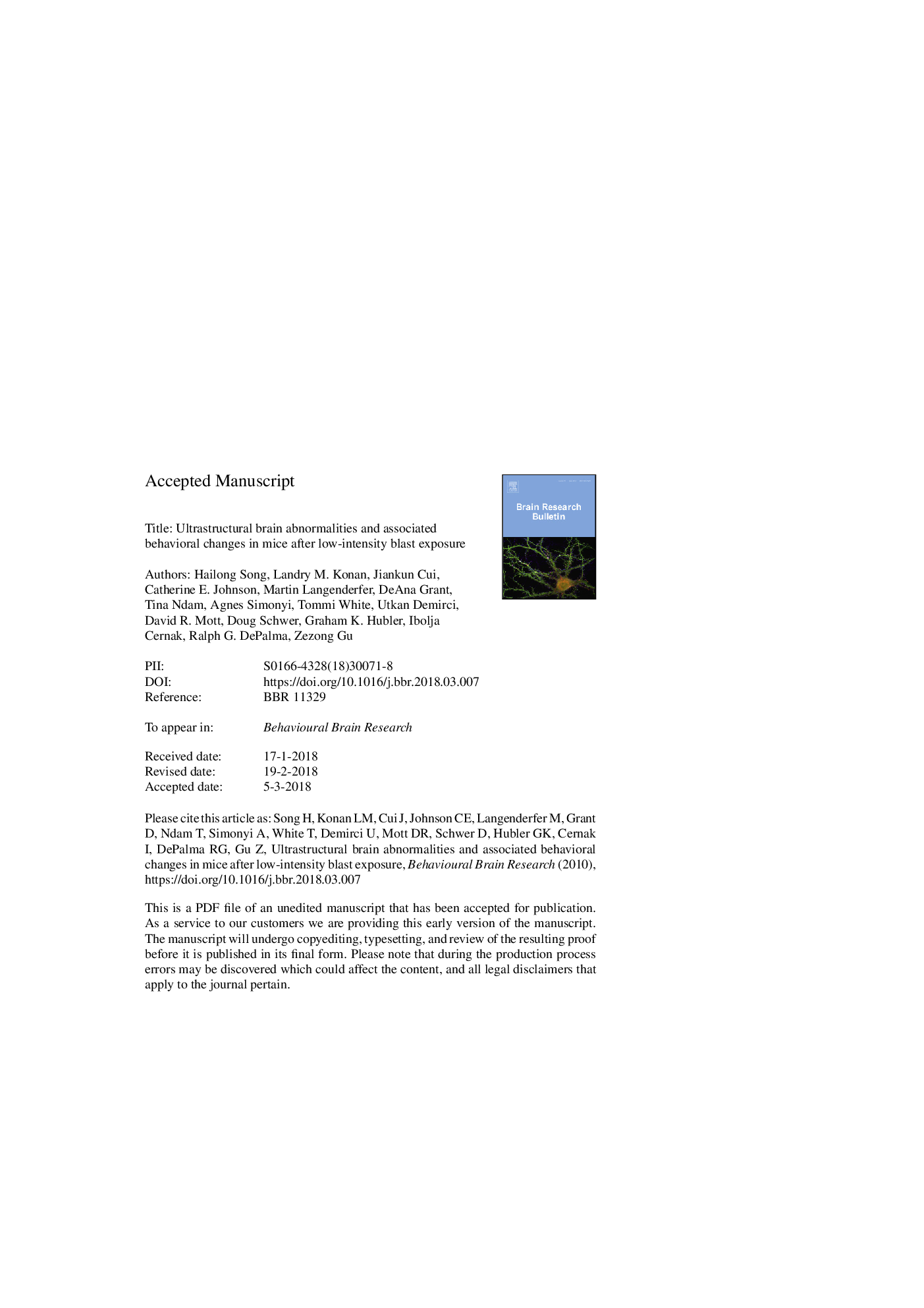| Article ID | Journal | Published Year | Pages | File Type |
|---|---|---|---|---|
| 8837780 | Behavioural Brain Research | 2018 | 22 Pages |
Abstract
Explosive blast-induced mild traumatic brain injury (mTBI), a “signature wound” of recent military conflicts, commonly affects service members. While past blast injury studies have provided insights into TBI with moderate- to high-intensity explosions, the impact of primary low-intensity blast (LIB)-mediated pathobiology on neurological deficits requires further investigation. Our prior considerations of blast physics predicted ultrastructural injuries at nanoscale levels. Here, we provide quantitative data using a primary LIB injury murine model exposed to open field detonation of 350â¯g of high-energy explosive C4. We quantified ultrastructural and behavioral changes up to 30 days post blast injury (DPI). The use of an open-field experimental blast generated a primary blast wave with a peak overpressure of 6.76â¯PSI (46.6â¯kPa) at a 3-m distance from the center of the explosion, a positive phase duration of approximate 3.0â¯milliseconds (ms), a maximal impulse of 8.7â¯PSIâ¯Ãâ¯ms and a sharp rising time of 9â¯Ãâ¯10â3â¯ms, with no apparent impact/acceleration in exposed animals. Neuropathologically, myelinated axonal damage was observed in blast-exposed groups at 7â¯DPI. Using transmission electron microscopy, we observed and quantified myelin sheath defects and mitochondrial abnormalities at 7 and 30â¯DPI. Inverse correlations between blast intensities and neurobehavioral outcomes including motor activities, anxiety levels, nesting behavior, spatial learning and memory occurred. These observations uncover unique ultrastructural brain abnormalities and associated behavioral changes due to primary blast injury and provide key insights into its pathogenesis and potential treatment.
Keywords
Related Topics
Life Sciences
Neuroscience
Behavioral Neuroscience
Authors
Hailong Song, Landry M. Konan, Jiankun Cui, Catherine E. Johnson, Martin Langenderfer, DeAna Grant, Tina Ndam, Agnes Simonyi, Tommi White, Utkan Demirci, David R. Mott, Doug Schwer, Graham K. Hubler, Ibolja Cernak, Ralph G. DePalma, Zezong Gu,
